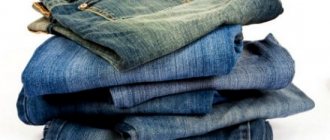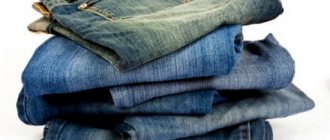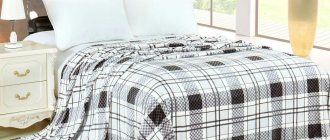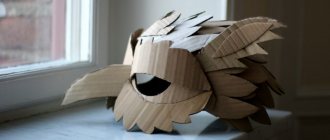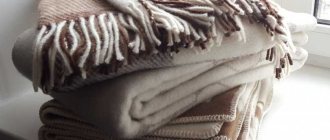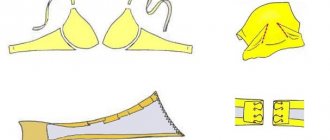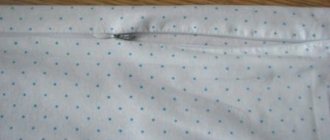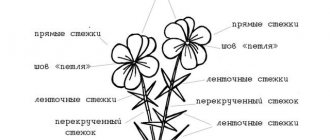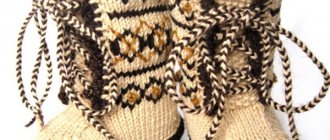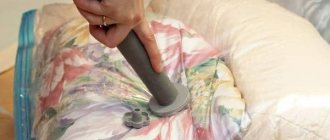You just want to wrap yourself up in a large, warm, cozy quilted blanket on a cool autumn or winter evening. Thanks to the stitch mode in modern sewing machines, anyone can now sew such a blanket with their own hands, without spending a lot of time on it, as before, when each stitch was done by hand. A master class on how to make a quilted bedspread quickly and easily with your own hands using the quilting technique with step-by-step photo accompaniment will tell you how to do this.
Determining the bedspread model
So, the store came across the “ideal” piece of fabric that just begs to become a blanket on a child’s crib. Great! Now you need to think about what it will be like: light decorative or dense, under which you can hide in cold weather.
Inventing a bedspread is a complex creative work.
There is no need to invent a shape or make complex patterns: in any case, the product will be either square or rectangular. But you will have to think about the design. Better yet, consult with your child to find out what his dream bedspread looks like.
For girl
No matter how trite it may sound, almost every girl wants to feel like a princess. Therefore, many young ladies gravitate towards ruffles, frills and all sorts of cute things to decorate the bedroom. So why not sew a girl a real royal bedspread for her bed: with elegant frills and, for example, a monogram of her name in the center?
A do-it-yourself bedspread for a bedroom in a modern style is a great solution!
Other girls are not so sentimental and dream of big things. Maybe about the adventures or career of a great zoologist. In this case, their sleeping place can be covered with a blanket with intricate patterns depicting their favorite characters.
For boy
To sew the perfect bedspread for a boy, you need to find out who will sleep under it. Maybe this is a gallant knight, a brave pirate, a superhero or a future sports champion?
Of course, children's preferences and priorities change quickly, but their favorite topics remain relevant for a long time. Therefore, you can choose a pattern on the fabric based on your preferences. A boy is unlikely to be pleased with “cute” ruffles and frills, but applique will be an excellent decorative option.
When choosing a bedspread, you should consider the placement of the bed.
With a little effort, the blanket could end up with a soft version of a board game or a real treasure map drawn up by a loving mother. Such a thing is suitable not only for relaxation, but will also become an integral attribute of the game.
Material selection
To sew a baby light bedspread for a girl's bed with your own hands, you can take satin or shiny fabric. Surely the owner of the room will like the smooth texture of the fabric and its slight shine.
Choose high-quality material for the bedspread.
These materials are easy to drape, they can be used to make puffs, flounces, and combine with lace trim. Faux fur is an interesting material for sewing a bedspread. It can be with smooth or long pile.
Microfiber is a pleasant fabric.
The only thing is that there is no need to save on fabric. High-quality hypoallergenic synthetic fur will last longer and will not cause reactions on the skin.
For the summer version of the bedspread, satin fabric is suitable, which retains its shine and bright colors for a long time.
A warm winter blanket can be made of woolen fabric or sewn with padding polyester. This quilted blanket is suitable for both boys and girls of all ages. A universal option is medium-weight cotton fabrics.
Satin is a chic fabric for creating a bedspread.
They are easier to work with than finicky satin, so even a novice craftswoman can sew a real masterpiece.
What you need
To hand quilt a blanket, you first need to select a shape. For novice craftsmen, it is better to opt for rectangular options, but if you already have sewing skills, then you can choose an interesting quilted model that complements the bedroom interior. The next step is choosing the material.
The most suitable material for sewing a quilt with your own hands is cotton. And for the cover they take the following canvases:
- satin;
- percale;
- teak;
- batiste.
If the quilt is intended for newborns, then flannel, flannel or calico will do. The filler is padding polyester, the thickness of which can be chosen at your discretion. The thinner the padding polyester, the easier it will be to quilt it. Teak with a dense texture is taken when natural down is chosen as a filler.
For beginning craftsmen, it is better to opt for rectangular options, but if you already have sewing skills, then you can choose an interesting quilted model.
Tips for choosing fabric:
- for a quilt, it must have properties such as wear resistance and density;
- the color of the material is selected based on your taste or the color scheme of the room;
- if you have to quilt by hand or if a beginner will do the work, then you should not buy jacquard, velor, linen or velvet, they are difficult to work with;
- It is better to sew the bottom part of your blanket from rough fabric to avoid slipping during use.
To manually quilt a blanket with your own hands, you should arm yourself with the following tools:
- needles;
- fabric color threads;
- edging tape;
- scissors;
- centimeter or ruler;
- sewing machine for quilting.
Choosing the color and design of the bedspread
There are no restrictions on the choice of shade. First of all, the child should like the blanket. Therefore, it is logical to choose his favorite color or choose shades in accordance with the decoration of the room.
Bright colors have a positive effect on a person.
Based on the principles of color psychology, calm, inactive children need bright colors in the room. It can be deep crimson, orange, juicy green. Active boys and girls, on the contrary, are recommended to choose things in calm tones.
Pastel, coffee colors, soothing mint and turquoise colors are suitable. Practical moms can opt for deep, dark shades that are less likely to get dirty and wear out.
Dark bedspreads are very practical.
But it is important to diversify the main fabric with bright/light applications and patterns so that the bedspread does not look gloomy. For example, make a “starry night”: sew golden stars, the moon, and multi-colored planets onto a dark blue background.
Step-by-step instruction
To make the quilt smooth and beautiful, each of the prepared parts must be ironed well. This way you can avoid unnecessary folds or lumps during production. After ironing, you need to cut off the protruding threads and then overlay all the parts except the filler. This can be done on an overlocking machine, but if you don’t have one, make a snake seam with a simple sewing machine.
When doing the work by hand, the edges are processed with a buttonhole stitch, placing the stitches at equal intervals. For this purpose, threads are selected according to the color of their base, as well as its type. If you do not treat it, the blanket will begin to creep around the edges when used, and filler will crawl through small holes.
The following steps follow:
Assembly
- the first piece of material is laid out on the floor so that its front side is at the bottom;
- a layer of filler is placed on top;
- on top is the second fabric piece, right side up.
The assembled workpiece is carefully straightened out and secured with sewing pins so that its parts do not move to the sides. Pins are inserted not only on the sides, but also in the center of the blanket in order to evenly quilt the fabric. Next they start drawing.
Preparation and calculation of fabric consumption
Have you chosen a design? It's time to do the calculations. What should be done:
- measure the length, width and height of the bed;
- draw the future bedspread on a scale, taking into account the frills;
- add seam allowances, fit the bedspread on the bed (3-5 cm is enough);
- if the blanket consists of sewn elements, mark the seam lines in the drawing (also provide an allowance for them).
Before making a bedspread you need all the materials.
To calculate the required amount of fabric, you need to know the width of the cut. To sew a double bedspread from fabric 1.4 m wide, you will need to sew 2 parts. More fabric may be required to fit the pattern - this must be taken into account when purchasing printed fabrics.
Use the colors you like.
To calculate the size of the upper part of the bedspread, it is enough to know the parameters of the future product and add 3-5 cm to each edge for the seams. If a ruffle or frill is intended, the fabric size for it must be multiplied by 1.5 (for a more fluffy frill by 1.7).
In addition to fabric, you will need scissors and other materials and tools for sewing.
Tip: for sewing a bedspread, it is better to choose fabric with a width of 2.8 m. You can use it to make a double blanket without a seam in the middle, and the remaining cut is enough for a frill.
Pattern
Having decided on the size of your quilt, you need to make a pattern from the purchased material. The first thing to consider is that there will be some shrinkage in the finished hand quilted product, as after the process the length will be reduced to 4 centimeters on each side. If you use binding for edging, there is no need to leave extra centimeters, but if such a technique is not in the plans, then about 5 centimeters on each side will be rolled up.
The insulation should be uniform, without lumps or tears.
So, if the standard size of a quilt is 220x200 centimeters, then for your pattern you will need to cut out 2 pieces 229x209. This is the case when using thin padding polyester, but if you put thick padding polyester or fluff inside, then the parts should be longer on each side by another 5 centimeters. The pattern of a quilt for a child will look different, since in this case you should start from the dimensions of the crib.
When the parts for the base are cut out, the filler is cut out. Let's consider the simplest option - padding polyester. Measure out the required length and width and cut with ordinary scissors. The insulation should be uniform, without lumps or tears.
Making a bedspread pattern
On graph paper you need to draw all the elements of the future product with seam allowances:
- main fabric;
- straight frill details;
- corner part of the frill.
You can find the bedspread pattern on the Internet.
You can draw half of the piece and cut it out on fabric folded in half. But this method is not suitable for silk fabrics, as well as for lining material.
Use the advice of experts on sewing bedspreads.
When transferring a pattern to fabric, safety pins are used: they secure the template to the fabric.
Use good threads to sew the bedspread.
Cut the fabric strictly on a flat surface. It is most convenient to do this on the floor. You can use leftover fabric for the frill. Before sewing a blanket on a machine, you need to stitch it by hand.
Secure the frill
You can sew a quilted bedspread with your own hands without a frill, then it will resemble a regular blanket. We hem the cut frill, sewing a line into the hem. We bend the upper edge of the part, apply it to the bedspread and carefully pin it, making folds of the required size. We pay special attention to the corners, making sure that the fabric does not stretch. We attach the frill, remove the needles and iron the finished product.
Now you know how to sew a quilted bedspread with your own hands. Perhaps someone will think that this procedure is too labor-intensive, while others simply do not like or do not know how to sew. No problem. You can always find a beautiful quilted bedspread on the Westwing website. Here is a collection of the most interesting products placed in interiors of different styles, which makes it easier to choose “your” model. Scroll through the pages of the site, here you will definitely find an exclusive little thing that will make the room special!
Varieties of techniques for making bedspreads with your own hands
A cute baby blanket (or maybe even a family blanket) doesn't have to be made from solid pieces of fabric. There is an original patchwork technique that allows you to use small pieces of fabric.
Contact a professional for help sewing your bedspread.
To sew such a bedspread, you need to cut identical square (triangular ones are possible, but they are more difficult to combine) scraps from several types of fabric. For sewing, use leftover fabrics (they are usually sold at a discount) or use unnecessary items with a soft texture.
The finished bedspread can be decorated and decorated according to your taste and desire.
You can integrate cutouts from your favorite things into a patchwork quilt, for example, sew in a piece of a worn-out dress that a girl doesn’t want to part with.

